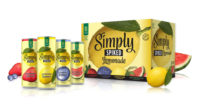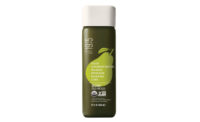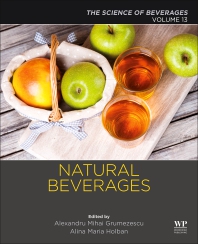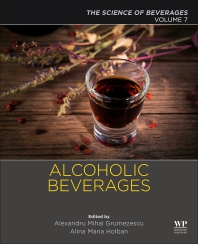Health and wellness goals lift fruit flavors in beverages
Innovations taking cues from global flavor trends

Image courtesy of Waterloo Sparkling Waters
Used to describe something that is the right size or well-suited, the idiom “fits like a glove” is a common phrase in everyday conversations. As beverage-makers look to align taste profiles with the growing demands on health-and-wellness products, suppliers are crafting solutions that mimic that same sentiment.
“Today’s consumers view functional benefits in their foods and beverages as a baseline expectation, not just a trend,” says Jennifer Zhou, global product marketing and senior director of flavors at ADM, Chicago. “Many are interested in specific functional claims to help meet their personal wellness goals, like weight management, digestive health, mental acuity and stress relief. In beverages, signaling flavors help cue consumer associations with ingredients for wellness, such as citrus fruits and vitamin C, which is commonly associated with immune function, or chile peppers and capsicum, which consumers may connect to inhibiting inflammatory response.”
Zhou notes that authentic fresh fruit flavors are fitting this movement, particularly citrus flavors.
“Citrus is an iconic flavor profile in everything from flavored waters and ready-to-drink (RTD) teas to seltzers and sports drinks,” Zhou says. “We also see beverage launches keeping citrus profiles interesting with combinations of flavors, such as passionfruit lime, honeydew lemonade and jalapeño with blood orange.
“To support on-trend and emerging citrus profiles, we use our Corefold technology, unlocking the vibrant, juicy flavors of pink grapefruit, key lime, calamansi, yuzu, clementine and more,” she continues. “Made possible with novel and proprietary separation technologies and concentration methods, Corefold focuses on the core element of citrus oil to emphasize the molecules responsible for impact and mouthfeel, while capturing the top notes for freshness and aroma.”
Al Murphy, CEO at Mother Murphy’s Flavors, Greensboro, NC, also pinpoints the rise in fusion flavor profiles, calling attention to recent pineapple mint ready-to-drink (RTD) tea he recently tried.
“We’re seeing more combination fruit flavors because people get tired of seeing the old pineapple,” he says. “They want more nuances, they want more tapestry, they want more layers and that’s what you can do with combination fusion flavors.”
Michael Oden, Mother Murphy’s Flavors’ lead of marketing and sales, also calls attention to flavor innovations in the vodka category, for instance, a savory and sweet combination of chipotle mango, or a sweet and heat amalgamation of mango habanero.
“I’ve seen ube flavors, yuzu flavors, passion fruit flavors, kind of outside the norm of regular strawberry, blueberry, peach, single, linear flavors you’re going into fusion flavors creating excitement within that category.”
Megan Byrnes, marketing manager at Gold Coast Ingredients, Commerce, CA, also calls attention to the impact of hybrid flavor profiles, particularly among lemon and lemonade beverages.
“Lemon and lemonade hybrid flavors remain strong in the beverage industry,” she says. “Manufacturers innovate with flavors like mango lemonade, watermelon lemon, lemon cayenne, blueberry lemon, blackberry lemon, lavender lemon and elderflower lemon.
“Mango also takes the lead in hybrid flavors with mango passion fruit, mango peach, mango orange, and mango pineapple,” she continues. “Trending floral hybrid flavors include citrus hibiscus, strawberry hibiscus, raspberry rose, peach elderflower, pear elderflower and blueberry lavender.”
Mother Murphy’s Flavors’ Murphy and Oden also note that fruit flavor trends have expanded beyond the simple orange and lemon, but instead calling attention to specific varietals.
“With the fruit instead of just calling out the orange you might have a satsuma, instead of having a grapefruit you might have a tangelo,” Murphy says.
Oden adds “instead of lemon, a lemon Meyer, something specific where the consumers says well I know exactly what Lemon Meyer tastes like.”
Simon O’Brien, senior creative manager at Flavor Producers, Valencia, CA, adds that the impact of health and wellness has extended beyond traditional fruit flavor profiles.
“The surge in innovative functional ingredients and the resurgence of simpler labels in health and wellness beverages, especially post-pandemic, has heightened the intricacy of taste profiles and flavor options,” he says. “While traditional fruit flavors remain popular, there’s a growing desire for tropical and exotic fruit profiles, spanning from familiar varieties like Meyer lemon to the more adventurous flavors of Asian fruits like lychee.”
Adam Kitchen, applications technical service manager at Sensient Flavors & Extracts, Hoffman Estates, IL, notes that fruit flavors can be ideal for better-for-you beverages as their profiles also can provide masking benefits.
“From a development standpoint, many fruit flavors are a perfect pairing for the health and wellness trend because sulfurous fruits, in particular, can naturally help mask off-notes from the addition of some functional ingredients,” he says. “In addition to citrus flavors always being popular beverage options, there has been a trend toward stretch flavors and exotic fruits like passion fruit, mango, peach, and other more approachable tropical flavors.”
Meanwhile, Philip Caputo, marketing and consumer insights manager at Virginia Dare, Carteret, NJ, explains that the use of flavors like citrus and botanicals allow beverage-makers to communicate health qualities to consumers.
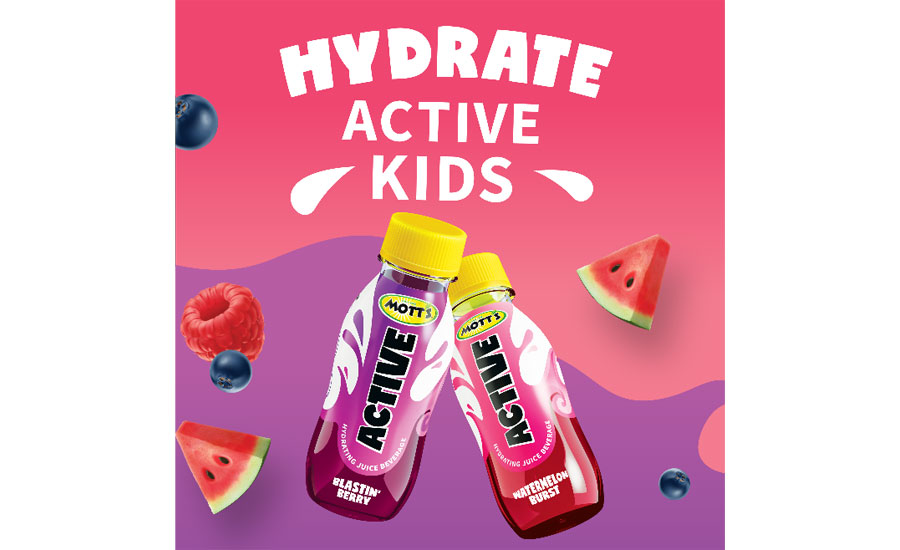
“As we’ve seen a move toward holistic and proactive wellness by consumers, flavors that have a natural wellness halo have definitely seen a boost,” he says. “Using flavors like citrus or botanicals can provide a short-hand to signal consumers that a product is in line with their wellness ideas.”
Rebecca Shurhay, senior marketing specialist at Flavorchem, Downers Grove, IL, explains that brand owners increasingly are turning to botanical flavors to help meet consumers’ needs in term of taste, health and functionality.
“The global market for botanical beverages is expected to grow steadily at a rate of 6.4% annually until 2033,” she says. “Sports and energy drinks, carbonated soft drinks, and ready-to-drink teas have seen a surge in botanical flavors over the last four complete years, reflecting a rising preference for beverages with benefits and natural ingredients. Approximately seven in 10 consumers indicate that when a beverage contains botanicals, they perceive it as healthier, regardless of whether a health claim is explicitly stated.”
Shurhay notes that botanical-infused beverages’ rise in popularity can be attributed to their refreshing natural appeal. “Additionally, consumers are drawn to the perceived wellness attributes of botanicals, attracting consumers looking to incorporate functional ingredients into their diets,” she adds.
Yet, health-and-wellness inspired flavor expands beyond just the type of flavor, experts note.
“Health and wellness trends that are impacting the beverage industry include vegan, plant-based, free-from (gluten, dairy, nuts), better-for-you, and functional ingredients with health and mood benefits,” Gold Coast Ingredients’ Byrnes says. “As a result, manufacturers are turning towards flavors that fit in the health and wellness trends like vegan flavors, allergen-free flavors, and better-for-you (fruit and botanical) flavors.”
Another health-and-wellness trend proliferating throughout the market has been the growth of the non-alcohol space, for instance, alcohol-free beer, wine and spirits, Mother Murphy’s Flavors’ Murphy says. He notes that as consumers have decreased their alcohol consumption, the flavor profiles of alcohol products still are in rotation as consumers still want to be able to socialize with those who are drinking.
An example of this Murphy highlights is Waterloo Sparkling Water’s latest flavor launches: All Day Rosé, Pi-Ño Colada and Mojito Mocktail Sparkling Waters. All flavors are made with Non-GMO Project Verified natural flavors and purified carbonated water, the company says.
“[W]hat you’re seeing is ‘how do I have a fun profile that reminds me of a cocktail that doesn’t have alcohol in it’ for the health and wellness aspect,” Murphy says. “You’re seeing more trends of bringing those fanciful flavors into non-alcohol formats.”
Virginia Dare’s Caputo also highlights the importance of elevating flavor profiles within alcohol-free beverage space.
“Flavor innovation is really taking things to new heights lately,” he says. “Zero-proof RTD beverages are particularly primed for exciting ideas. A canned mocktail doesn’t have the inherent situational draw of a mixed drink or beer so it has to really be fun to compete in that space; it has to be something special.
Going global and back in time
Although interest in better-for-you products has influenced vanguard flavors, more factors are in play as to what is driving the latest in beverages.
“Traveling and seeking global experiences is another trend influencing the flavor market,” Gold Coast’s Byrnes says. “There is currently a lot of attention around global cuisine, and flavors help manufacturers give consumers new experiences with tastes from around the world. Global flavors for beverages include yuzu, lychee, matcha, horchata, dulce de leche, rhubarb, kumquat, guanabana, mangosteen and star fruit.”
ADM’s Zhou echoes similar sentiments, highlighting the draw global flavors have on products today.
“Consumers are continually drawn to globally inspired flavors, particularly from Asia, South America and the Middle East, as well as clean labels with closer-to-nature ingredients and taste profiles with depth and sophistication,” she says. “For example, an RTD yuzu kosho shrub (made with spirits or soda water) taps all three trends, spotlighting the fiery, fermented flavor of yuzu kosho, a Japanese condiment typically used in culinary applications. Other regional favorites include Fuji apple, mandarin orange, prickly pear, papaya and dragon fruit.”
In terms of what’s next for global flavors, Flavor Producers’ O’Brien prognosticates that Asian-inspired flavor profiles will play greater influence on new products.
“The Asian influence trend made a powerful statement at this year’s Natural Products Expo, signaling its potential to gain even more momentum over the next couple of years,” he says. “Keep an eye out for an influx of exotic Asian fruits, innovative functional ingredients, and intriguing textures making their way onto store shelves soon.
“Additionally, I foresee us stepping into the next wave of savory flavors in beverages,” he continues. “While we’ve witnessed the ascent of herbal and botanical flavors over the past decade, there’s been a recent surge in spicy profiles. Anticipate further exploration into regional spice blends and inventive interpretations of umami in beverages, especially within the alcohol and adult alternative markets. Notably, this trend is already making waves in some of the most esteemed cocktail bars across America.”
Among the ways that beverage formulators are incorporating global flavors has been part of a hybrid flavor profile, notes Sensient’s Kitchen.
“Global cuisine, especially Asian flavors, are providing a lot of inspiration by using an exotic flavor profile paired with something more approachable and common in the U.S. market,” he says. “For example, taking pandan ― which has a graham cracker flavor ― and pairing with key lime in a functional beverage or even a cocktail or beer. Asian flavors are lending new direction for tea trends also. In the USA, consumers are used to black tea, but we are seeing oolong, green tea or matcha paired with more common fruit flavors for introduction.”
Virginia Dare’s Caputo notes that when embarking on a global flavor influence, it is important for formulators to deliver authentic profiles.
“In addition to the authenticity of healthy indulgence, consumers are really excited about experiencing global community,” he says. “They want to explore other cultures that previously weren’t as accessible to everybody. Authentic global flavors are a big part of that. The industry is also seeing a burgeoning ‘newstalgia.’ Throw-back experiences in flavor and texture with new and innovative twists make expanding your taste horizons exciting but still accessible.”
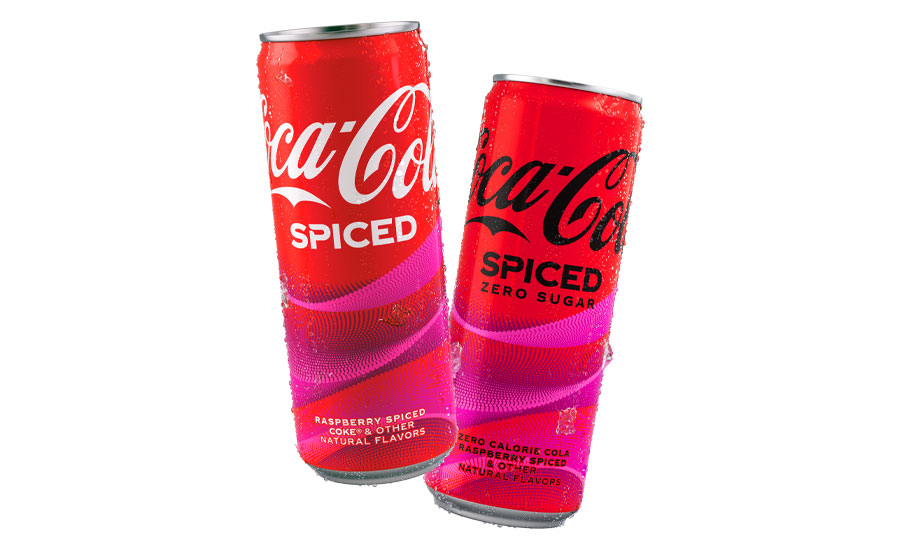
Sensient’s Kitchen elaborates that the interest in nostalgic flavors is getting a refresh to align with the better-for-you market.
“We are seeing a lot of nostalgic flavors coming back adjusted for the health and wellness market,” he says. “Consumers are looking for those flavors they enjoyed as a kid, but want them to fit into their adult lifestyle, which might include less sugar, more protein or fewer calories.
“Some of the more popular nostalgic flavors include orange cream, peaches and cream, and fruit punch, but now they are formulated for a better-for-you version,” Kitchen continues. “Nostalgic flavors are a great way to introduce a product that falls under the health halo because consumers are excited to relive those favorite flavors from the past while trying something new they may have hesitated to explore otherwise.”
Flavorchem’s Shurhay also calls attention to the impact that nostalgia is having on new creations.
“Nostalgia has been a significant driver for flavor and product development in 2024 and was a featured trend in Flavorchem’s 2024 Forecast,” Shurhay says. “Brands are tapping into consumers’ cravings for nostalgic flavors by reimagining familiar foods such as dessert, candy and childhood-inspired flavors. Over 40% of consumers said nostalgic and traditional flavors are the most influential in their choice of food and beverage products, and new products with nostalgic claims have grown 18% annually on average since 2020, demonstrating the rising demand for familiar favorites, comfort, and indulgence.”
As an example she highlights the impact what adding a new twist to an old favorite can have on the market.
“Timeless combinations showcasing popular flavors like cola, lemon, lime, and orange will retain their popularity in the years ahead but are receiving a more elevated twist,” she says. “Coca-Cola unveiled a new permanent offering to its portfolio, Coca-Cola Spiced, for the first time in over three years. The new beverage blends their iconic cola with raspberry and exotic spices.”
Whether it’s new or old, the vanguard flavors of new beverages are sure to excite consumers.
Looking for a reprint of this article?
From high-res PDFs to custom plaques, order your copy today!





